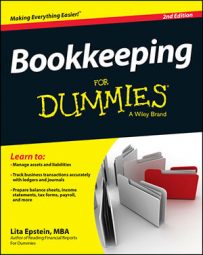You may think of depreciation as something that happens to your car as it loses value. In fact, most new cars depreciate 20 to 30 percent or even more as soon as you drive them off the lot. But when you’re talking about accounting, the definition of depreciation is a bit different.
Essentially, accountants use depreciation as a way to allocate the costs of a fixed asset over the period in which the asset is useable to the business. You, the bookkeeper, record the full transaction when the asset is bought, but the value of the asset is gradually reduced by subtracting a portion of that value as a depreciation expense each year.
Depreciation expenses don’t involve the exchange of cash; they’re solely done for accounting purposes. Most companies enter depreciation expenses into the books once a year just before preparing their annual reports, but others calculate depreciation expenses monthly or quarterly.
One key reason to write off assets is to lower your tax bill, so the IRS gets involved in depreciation, too. As a business owner, you can’t write off the cost of all major purchases in one year. Instead the IRS has strict rules about how you can write off assets as tax-deductible expenses.

